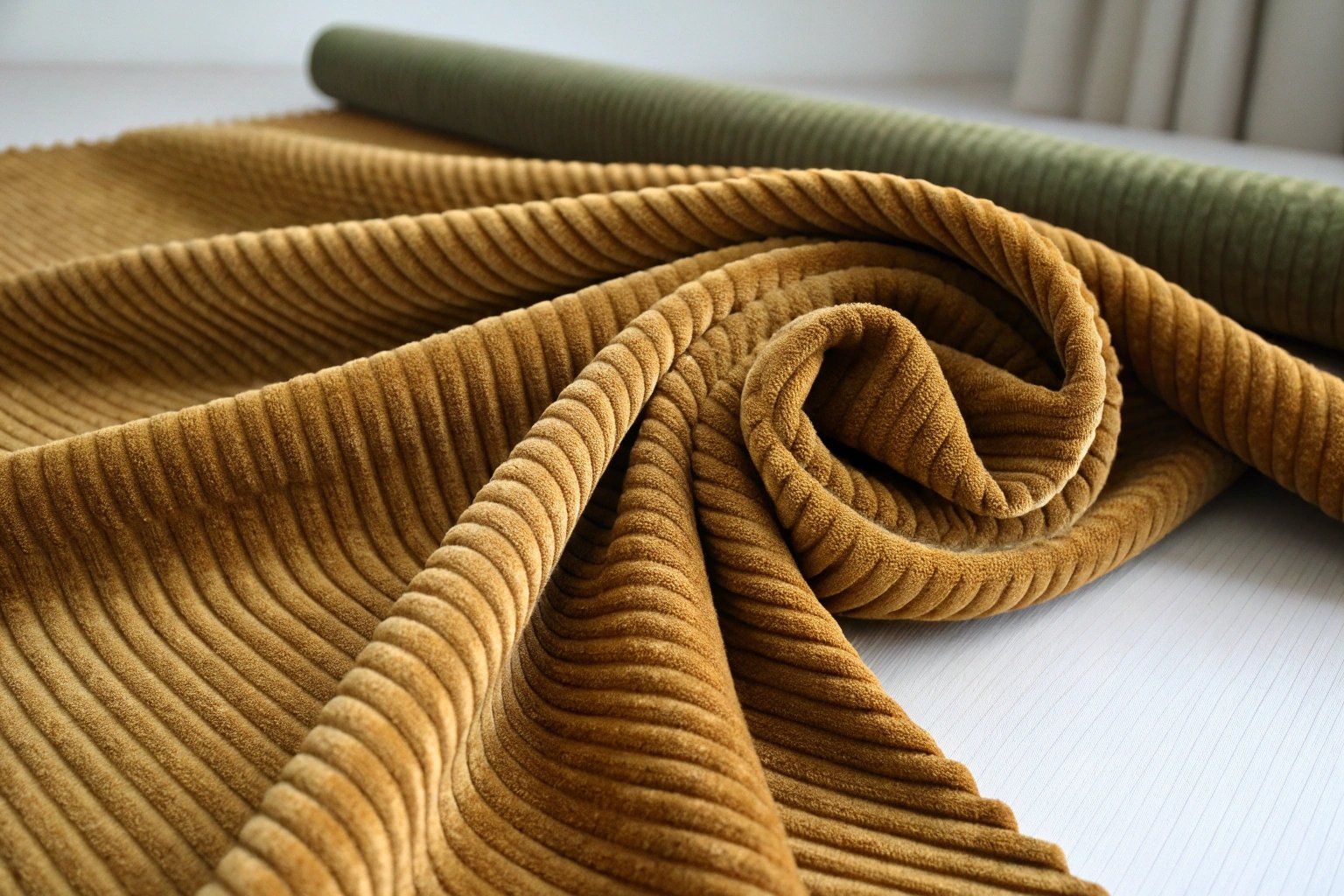Corduroy fabric is more than just a throwback to the ’70s—it’s a textile that merges texture, warmth, and character in a way that few other materials can. Recognized for its distinct vertical ridges, or "wales," corduroy brings both visual interest and practical benefits to clothing and interiors alike. From tailored jackets to cozy cushions, this fabric continues to hold a respected place in both fashion and home design.

While it’s often associated with vintage style, corduroy has evolved. Designers today use it to create contemporary silhouettes and versatile pieces. What makes it stand out is its ability to be both rugged and refined. Whether you’re dressing for a weekend outing or styling a cozy reading nook, corduroy offers a tactile richness that few other fabrics can match.
How to Wear Corduroy with Style
Corduroy has made a strong comeback in recent years, but styling it well takes more than just throwing on a jacket. The key lies in balance. Since corduroy is already visually textured, it pairs best with simpler, smoother garments. A fitted corduroy jacket worn over a plain t-shirt, or straight-leg corduroy pants matched with a clean button-down, can feel both timeless and modern.
Fit plays a big role too. Oversized corduroy garments can quickly look outdated, while tailored pieces feel intentional and sharp. Stick to darker shades like deep green, navy, or charcoal for an easier time coordinating. Lighter tones like sand or pastel blue work well too, especially when paired with neutral basics that keep the outfit grounded.
As for footwear, aim for clean lines—boots, loafers, or minimalist sneakers complement the structured look of corduroy. The goal is to let the texture be the statement while the rest of the outfit supports it.
What Makes Corduroy Fabric Unique?
Corduroy is made by weaving extra sets of fibers into the base cloth to form vertical ridges. These ridges, known as wales, give corduroy its signature texture. The number of wales per inch affects the fabric’s look and feel. Finer wales feel more refined and are often used in shirts or slim trousers, while wider wales lend a chunkier, vintage look more suited for outerwear.
Despite its rugged construction, corduroy is surprisingly soft. The raised pile gives it a plush surface that adds to its comfort, especially in cooler seasons. While thicker than many cotton-based fabrics, it remains breathable, particularly when made from high-quality cotton or blended with spandex for stretch.
Corduroy’s durability is one of its standout traits. It handles frequent use and washing better than most lightweight weaves, making it ideal for daily wear and even upholstery. This mix of toughness and softness is why it’s equally common in fashion and interiors.
A Brief History and Cultural Significance
Though many associate corduroy with 1970s fashion, its roots run far deeper. Originally known as "fustian," a heavy cloth worn by laborers, it became popular in 18th-century France. The term “corduroy” is believed to come from the French "corde du roi," meaning "cloth of the king"—a nod to the fabric’s elevation from workwear to aristocratic attire.
In modern fashion history, corduroy had a major moment during the counterculture movement of the 1970s. It became a symbol of rebellion and intellectualism, often worn in earthy tones and paired with denim or flannel. Today, that nostalgic flair lives on—but it’s being reimagined with cleaner silhouettes, refined cuts, and more versatile styling.
How to Recognize Quality Corduroy
Not all corduroy is created equal. A high-quality piece will be immediately noticeable by touch and appearance. The wales should be evenly spaced and firmly woven, without gaps or loose threads. The surface should feel smooth and soft, not rough or itchy. This is especially important for garments worn close to the skin, like shirts or trousers.
Another sign of quality is the fabric composition. The best corduroy is typically made from 100% cotton or a cotton-spandex blend, which adds flexibility without compromising structure. Fabrics with high synthetic content may feel stiffer, trap heat, or lose softness over time.
Stitching also reveals a lot. Well-made corduroy garments have clean seams and strong, even stitches, especially around high-stress areas like pockets and waistbands. Finally, look for a consistent color tone—fading or patchiness can signal lower-grade dyeing or fiber quality.
Why Corduroy Is Still a Go-To Fabric
What keeps corduroy relevant is its ability to move between decades and design languages. It can look retro or modern, rugged or refined, depending on how it’s cut and styled. In cooler seasons, it offers insulation without bulk. In home decor, it adds texture and depth without being flashy.
Its comfort, strength, and style versatility make corduroy a smart choice for anyone looking to build a wardrobe or collection that’s both functional and character-rich. Whether you’re sourcing materials for your next fashion drop or choosing upholstery for a reading chair, corduroy is one fabric that delivers lasting appeal—both visually and practically.

